The origin of ribollita comes from the Tuscan tradition, in particular from the peasants of the Tuscan countryside, it is a symbol of the poor cuisine based on the concept: 'nothing is thrown away in the kitchen'. It is in fact prepared with typical winter vegetables such as black cabbage and enriched with stale bread to make it more substantial and give it a semi-solid consistency.

Ribollita: the origins
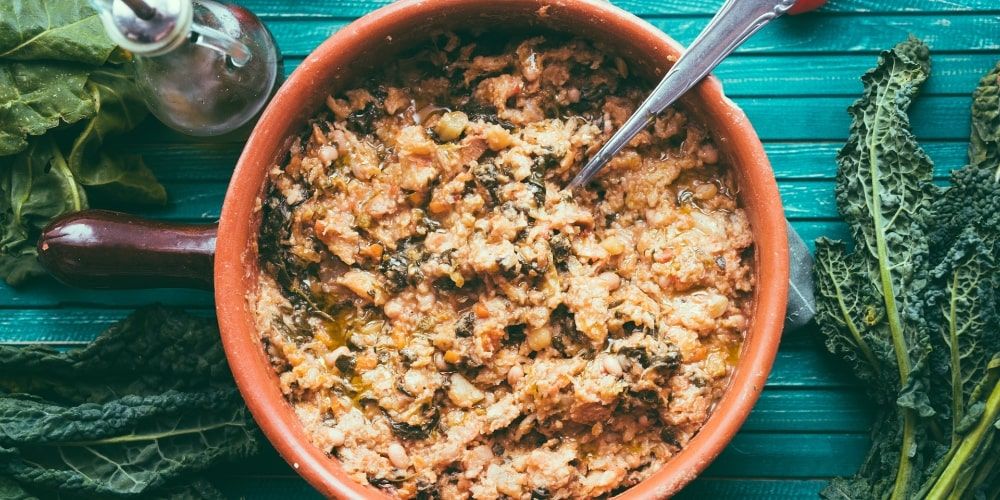
As we said, the origins of the ribollita come from Tuscan farmers, in particular the dish comes from the countryside around Florence, Arezzo and Pisa. The name 'ribollita' comes from the Italian words which means "boiled again", following the women's habit of preparing this soup in large quantities and then reheating it in the following days. What distinguishes it from other soups in fact is the custom of 'boil it again the next day, reheating it each time, an operation that makes it always tastier.
The recipe first appeared in a cookbook in 1910 "L'arte cucinaria in Italia" by Alberto Cougnet, but it already had a long tradition behind it. Its roots probably go back as far as the Middle Ages when an ancestor of ribollita prepared on Fridays was widespread when religion, as well as poverty, dictated eating 'di magro' (without meat). The soup was therefore reheated and consumed over several days, thus allowing a poor family to eat for a long time.
Even Pellegrino Artusi in his famous recipe book speaks of a 'Tuscan peasant lean soup', evidently referring to ribollita.
Today, ribollita remains the emblem of Tuscan cuisine, offered in trattorias and elegant restaurants in various versions, also based on seasonal vegetables.
Let's now see how to prepare it according to the recipe as close as possible to the original.
Ingredienti e caratteristiche
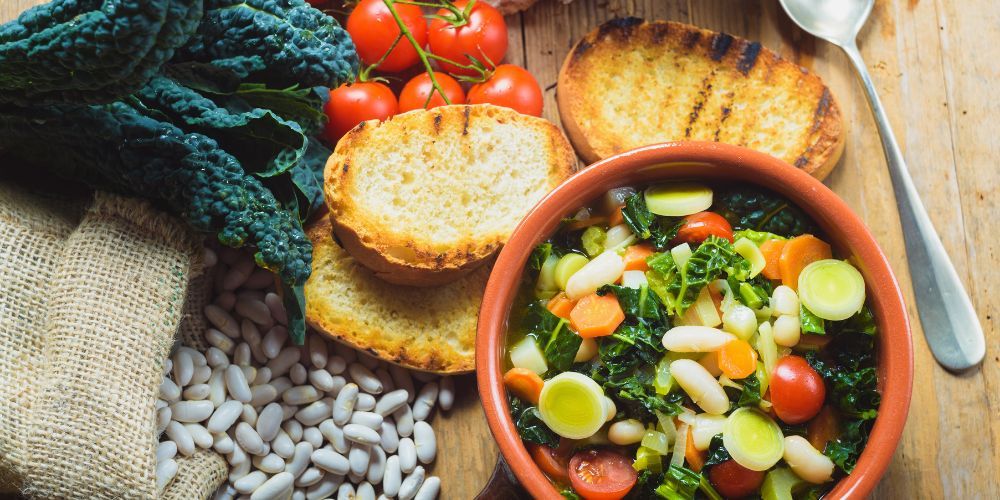
Ingredients:
200 g beans
one Savoy cabbage
2 potatoes
400 g Swiss chard
2 bunches of black cabbage
500 g stale bread
garlic
onion
celery
carrot
tomato sauce, peeled tomatoes or 250 g ripe tomatoes
red chilli powder
salt
extra virgin olive oil
thyme or pepolino
4-5 courgettes
Characteristics:
Beans: borlotti, cannellini or toscanelli beans are recommended.
Bread: Tuscan bread without salt must necessarily be used for the ribollita, this will guarantee the desired taste and texture.
Thyme: also known as "pepolino", or country thyme, should not be missing, as this is what gives the dish its typical flavour.
Preparation
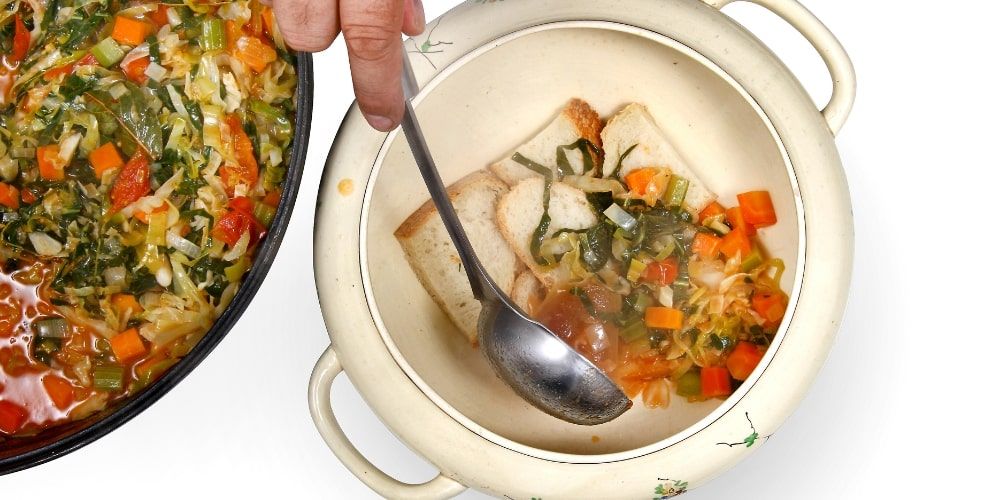
The preparation of ribollita is rather complex, as it has to be cooked for a long time and, above all, it has to be eaten the day after cooking, by boiling it.
1. Start with beans, which must be washed and left to soak for at least twelve hours, then drained and boiled in clean water, over low heat and in a pot with a lid.
2. In another pan, sauté the onion, celery, carrot, crushed garlic and peeled tomatoes.
3. When the onion starts to brown, add the roughly chopped Savoy cabbage, and when this also starts to wilt, add also the diced potatoes and courgettes, chilli powder and thyme or pepper.
4. If you have chosen to use tomato sauce instead of peeled tomatoes, now is the time to add a cup of tomato sauce to the vegetable pan. Stir everything so that the ingredients mix well together.
5. Next, add the chard, kale and boiled beans.
6. Let everything simmer for about an hour and a half, adding salt after a few minutes of cooking.
7. Meanwhile, prepare a pan with two layers of thin slices of bread on top of which you will pour the soup. Add then two more layers of bread and pour the rest of the soup on top. Now leave all to rest until the next day.
8. Wait... The real ribollita is ready the next day!
9. Put the soup back on the stove, boiling it for about a quarter of an hour.
10. Before serving, add raw olive oil and pepper.
Variation and suggestions, everyone has his ribollita
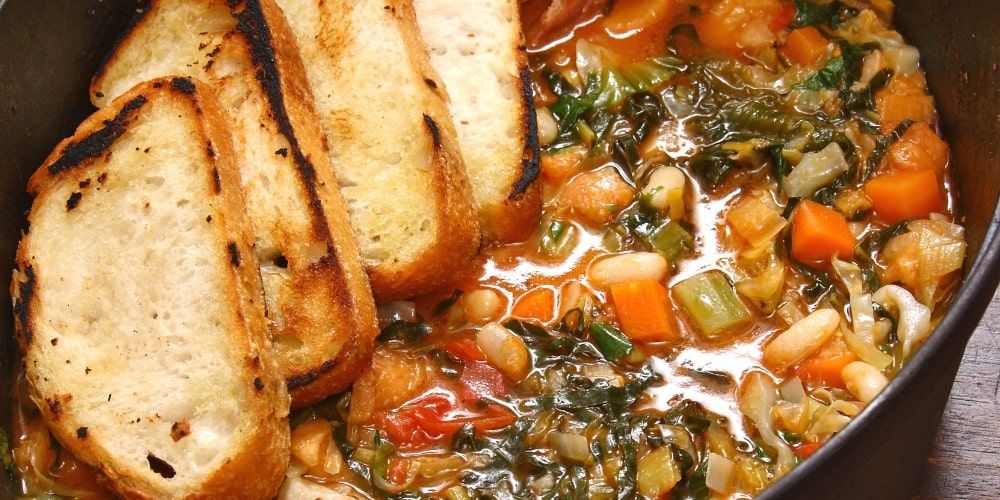
Over time, like other popular recipes from the peasant tradition, ribollita has spread as a true symbol of all Tuscan cuisine, in restaurants but also in homes, giving rise to infinite variations. Each family has its own personal and precious recipe, but this basically respects the true spirit of the original, poor recipe that was prepared with what was available at the moment.
About the author
Written on 12/09/2023


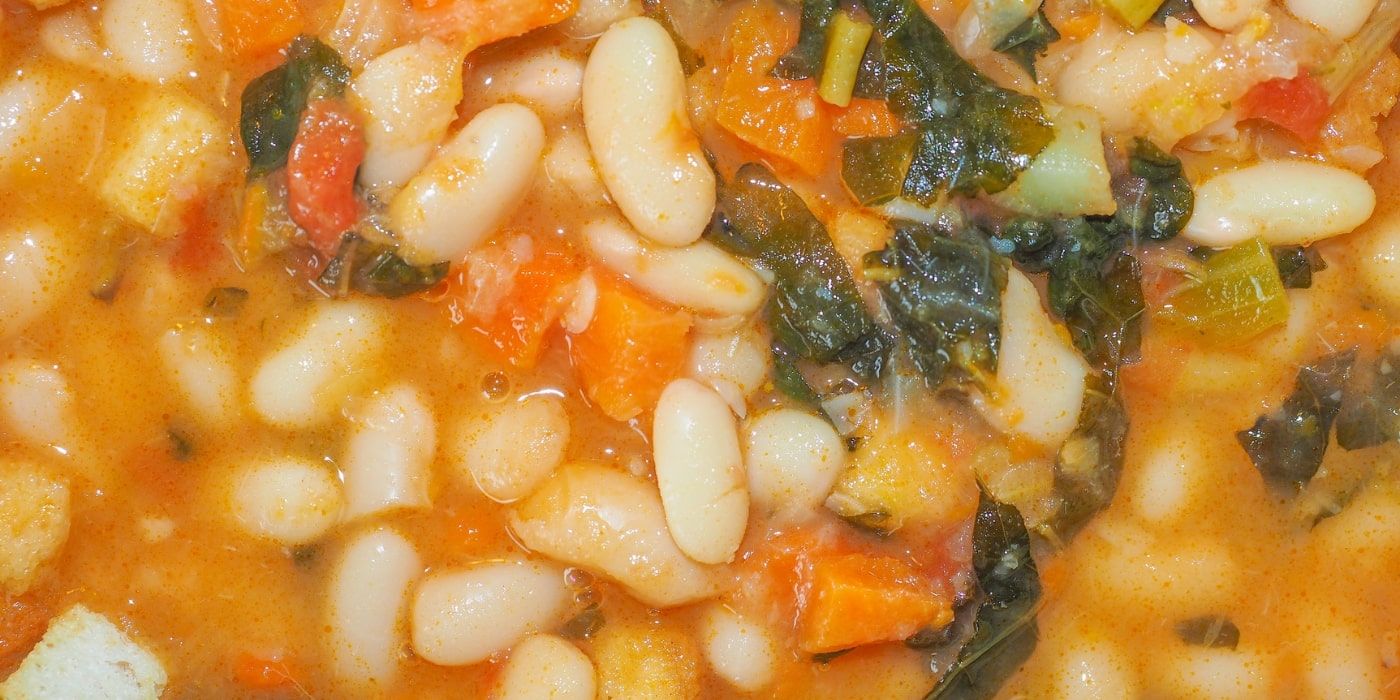
Eleonora Tedeschi
Ribollita, a Tuscan soup prepared with stale bread, black cabbage and beans, is a special winter comfort food, let's see how to prepare it!